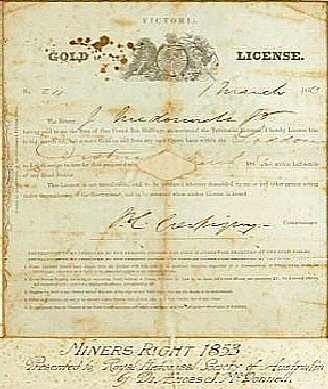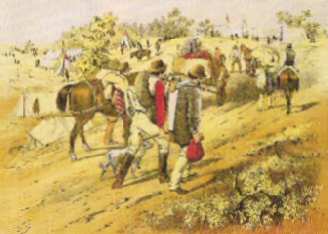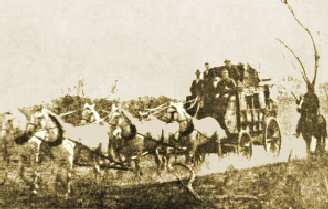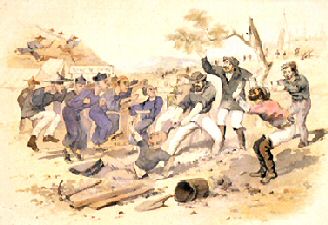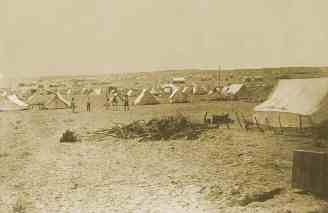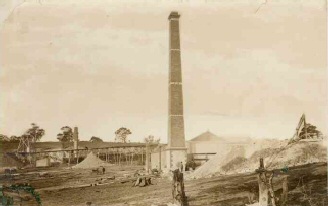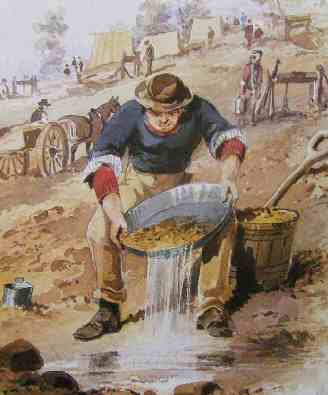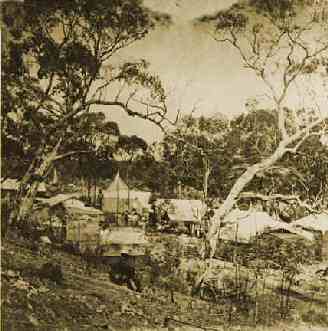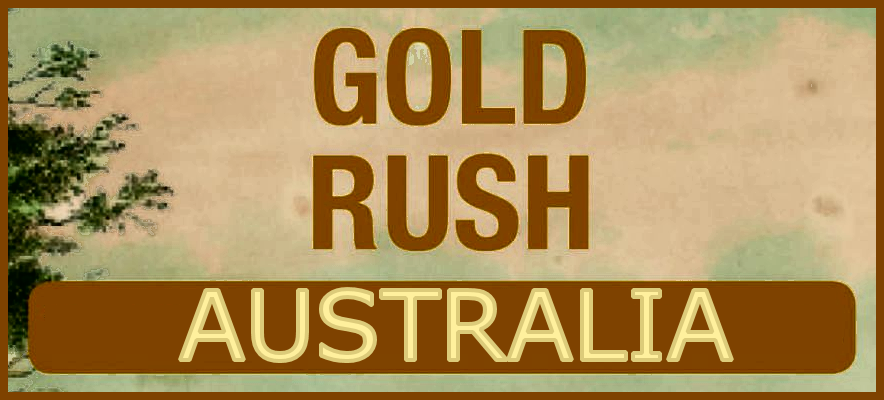
Note: Some of the sources on this page are websites still using "http://". Consequently, they are left as is.
To search for a word = Ctrl+f
SOUTH AUSTRALIA
Gold was first discovered in South Australia and the Commonwealth of Australia in 1846 at the Victoria mine near Castambul, City of Adelaide. The 12 ounce nugget was dug up by J. Richards. Little notice was taken of it at the time. Another find in the same year was at the Kitticoola Mine in the Kanmantoo Trough.
The South Australian gold rush per se got off to a slow start in the southern state even though gold was known to be there as mentioned above in 1846. Alluvial gold was located by in 1847 on the River Torrens and Onkaparinga.
Gold came to light at South Para River toward Gumeracha in the Barossa Valley, in 1849 when a farmer plowing his field dug up a piece of gold bearing quartz. The South Australian government was so concerned about the slowing economy it offered a reward for gold finds in the state from 1851 on. No major finds were made, however, so the state increased the reward to £1,000 and reduced prospecting licenses from thirty shillings to ten shillings a month
The rich mineral was detected by William Chapman, Hardiman and Hampton in Chapman Gully (Chapman's Gully) and Donkey Gully at Echunga in the Mount Lofty Ranges in 1852. It was the state's first gold rush. The mine gave 3100 kg of gold. Messrs Chapman, Hardiman and Hampton were the first to claim the reward, but despite the find being genuine the Government did not initially pay out. Some sources say that the reward was divided between the finders of Chapel Hill and Jupiter Creek (1868); Chapman's Gully was the original Chapel Hill diggings; the first claimants did eventually receive £500. Echunga Goldfield proved to be the State’s most productive. About 6,000 kg of gold was recovered valued at more than £300,000, good income during the South Australian gold rush.
"Fortune seekers found gold in alluvial soil and reefs at the Palmer Goldfields in the mineral-rich axial zone of Kanmantoo Trough." This was Palmer in South Australia not Queensland.
Finds in other states affected South Australians The population of South Australia was significantly lessened by people moving to Victoria and New South Wales in search of quick riches. Most of those left in the state were women. Indeed, such was the effect on the local economy that shipments of gold were made in 1852 from Victoria to South Australia in an attempt to increase the money supply. So little coinage remained in circulation in South Australia that miners could not sell their gold. Gold was initally made into strip "ingots" which were held by banks to support their issuance of paper notes. This was followed by production of gold coins but of poor quality. They were so bad that people could not buy things with them, so people melted the coins down and exchanged the gold for supplies they required.
Underground mining began at Moonta and Wallaroo mines in 1860. They produced 3.6 tons of gold.
A rush was on and 6,000 miners arrived in 1868 when alluvial gold was located by Job Harris, Carter and party south of Sandy Creek at Spike Gully in the Barossa Goldfield. Four thousand miners soon arrived.
In 1868 the Barossa mine opened between Cockatoo Valley and Williamstown in the Mount Lofty Ranges that stretches south to the Fleurieu Peninsula and north to the Barossa Ranges. On the second day there were 40 gold seekers, 1,000 within a week and 4,000 within a month. It finally reached 10,000. Gold output from the mine was 3110 kg. The towns of Barossa and Victoria Hill were established following the rush at Victoria Hill in 1869.
In 1868 Thomas Plane (£300 reward) and Henry Saunders (£200 reward) detected the gold at Jupiter Creek and Long Gully south of Echunga which included the area of White Gully, Surface Point, Fosters Gully and Golden Point. The mine's output reached 390 kg of gold
A township grew on the hill at Long Gully when gold was located by Messrs Thomas Plane and Henry Saunders at Jupiter Creek in 1868 south of Echunga; the mine produced 390 kg (25,000 to 50,000 ounces) of gold.
Gold came to light at the Lady Alice mine in the Para-Wirra region of the Barossa at Mount Lofty Ranges in 1868. More than 6,000 miners worked there.
Ulooloo Goldfield, near Burra, Nackara Arc, came into being in 1869 and produced 162 kg of alluvial gold mainly from Noltenius Creek and Coglins Creek.
A find was made by R. H. Biddle at Algebuckina Goldfield, where the Oodnadatta Track crosses Neales River, in the Peake Diggings and Denison Ranges in 1870. The mine gave 4.7 kg of gold.
In 1869 gold was detected at Birdwood which became the Black snake mine, also at Hynes Reef (diggings).
Gold diggings were set up at Mount Torrens Birdwood in the eastern Adelaide Hills in 1870. Crushing began at the Mount Torrens Battery in 1894. Another find was made at Birdwood in 1870 in the Torrens River (back of the Adelaide Hills 1869), Barossa Goldfield, Mt Crawford district (Mt Lofty Ranges). There were 170 mines which produced 20,000 ozs 622 kg of gold in the Birdswood region.
Gold was discovered at Mount Pleasant in 1870. A Mr Randell carried out the workings at Mount Pleasant Diggings.
In 1871 James Scott came across gold at Deloraine a few miles from Mt Pleasant. The mine itself is situated 10 km northwest of Birdwood, 35 km northeast of Adelaide. It was the largest producer in the Adelaide Hills giving 850 kg in all.
The Alma, Victoria, Alma Extended, West Waukaringa, Balaklava and Ajax mines in the Waukaringa Goldfield, Nackara Arc set up in 1873, gave 1,427 kg of gold.
A rush occurred at Biggs Flat in 1877 on the western side of the Onkaparinga River between the Wheatsheaf Inn and the old Stirling reef workings, having been located by Mr J. Biggs.
An output of 933 kg was reached at the Bird-in-Hand, New Era and Eureka mines 1881 to 1938 in the Woodside Goldfield, Mount Lofty, which was opened in 1881.
John Watts laid claim to gold in 1884 in the Gumeracha Goldfield (Mount Crawford Goldfield) at Watts Gully. Soon finds were made at Sailors, Speck, Dead Horse, and Blood & Thunder Gullies. The Watts Gully mine yielded nuggets as large as 14 ozs.
In the next few years, the attention was turned to other goldrushes occurring in both the central and north-east part of the State.
The Westward Ho and Homeward Bound mines were sources of gold in 1885 at Manna Hill in the Mannahill Goldfield, Nackara Arc, where 107 kg of gold was gold was produced 1885 and 1947.
There was an extensive and major rush at Teetulpa, Nackara Arc, in 1886 when gold was identified by Thomas Brady, a farmer of Lancelot, and Thomas Smith at Brady's Gully. Five thousand diggers were in the town by the end of the year. This was the largest number of miners in any field at any time in South Australian gold history. Most diggers originally came from Chapel Hill. Output reached 3132 kg of gold.
The Ajax Mine in the Waukaringa Goldfield, Nackara Arc, opened in 1887 and gave 69 kg of gold, 1887 and 1938.. A find at Kings Bluff, Nackara, followed. The Luxembourg and Queens Bee Mines in the New Luxenbourg Goldfield, Curnamon Province, were established at the same time and produced 15.5 kg 1887 and 1916.
Gold amounting to 743 kg was obtained from Wadnaminga Goldfield, Nackara Arc (1888 and 1940), established in 1888. Discovered in the same year was Boolooroo Goldfield in the Flinders Ranges which gave 16 kg of gold 1888 to 1937.
Tapley Hill in the Mongolata Goldfield, Nackara Arc, opened in 1889 and gave 342 kg of gold during it life. Taltabooka Goldfield, Nackara Arc, was discovered in 1889. This mine gave 11 kg.
Mount Ogilvie six kilometers from Tower Gap on Mount Lyndhurst in the Northern Flinders Ranges made its mark on the gold map in 1889. Gold was identified by Mr Ogilvie and Corporal Richards of the Baltana police was called in to verify it. A rush ensued with seven ounce nuggets being located at Golden Hole. The area is isolated and very hot.
Mount Grainger Goldfield, Nackara Arc, made its mark on the gold map in 1891. It produced 57 kg of gold.
The Golden Gully and Windlass Hill mines at the Angepena Goldfield in the Flinders Ranges, 1892, gave 31 kg of gold.
A shearing-shed hand by the name of Nichols stumbled on gold in 1893 at Tarcoola. The Tarcoola Goldfield is still in operation to this day, 2,400 kg of gold being produced. Gold was found at Glenloth Goldfield in this same year.
Gold amounting to 187 kg was obtained from the Kirkeeks Treasure Mine in the Nillinghoo Goldfield, Nackara Arc, which opened in 1894.
In 1894 gold was already being produced at Wallace Gully.
Johnson's Gully (16 km North of Waukaringa) In 1894 gave several nuggets
More discoveries followed at Glenloth and Earea Dam Goldfield 34 km west of KIngoonya on the Tarcoola-Glendambo Road, 1899. Gold digging began at Earea Dam Goldfield in the same year.
Gold was located again at Deloraine near Kersbrook in the Mount Lofty Ranges, 1909.
It should be noted that the worlds largest source of gold is the Olympic Dam Goldfield in South Australia opened in 1988.
Gold was first discovered in South Australia and the Commonwealth of Australia in 1846 at the Victoria mine near Castambul, City of Adelaide. The 12 ounce nugget was dug up by J. Richards. Little notice was taken of it at the time. Another find in the same year was at the Kitticoola Mine in the Kanmantoo Trough.
The South Australian gold rush per se got off to a slow start in the southern state even though gold was known to be there as mentioned above in 1846. Alluvial gold was located by in 1847 on the River Torrens and Onkaparinga.
Gold came to light at South Para River toward Gumeracha in the Barossa Valley, in 1849 when a farmer plowing his field dug up a piece of gold bearing quartz. The South Australian government was so concerned about the slowing economy it offered a reward for gold finds in the state from 1851 on. No major finds were made, however, so the state increased the reward to £1,000 and reduced prospecting licenses from thirty shillings to ten shillings a month
The rich mineral was detected by William Chapman, Hardiman and Hampton in Chapman Gully (Chapman's Gully) and Donkey Gully at Echunga in the Mount Lofty Ranges in 1852. It was the state's first gold rush. The mine gave 3100 kg of gold. Messrs Chapman, Hardiman and Hampton were the first to claim the reward, but despite the find being genuine the Government did not initially pay out. Some sources say that the reward was divided between the finders of Chapel Hill and Jupiter Creek (1868); Chapman's Gully was the original Chapel Hill diggings; the first claimants did eventually receive £500. Echunga Goldfield proved to be the State’s most productive. About 6,000 kg of gold was recovered valued at more than £300,000, good income during the South Australian gold rush.
"Fortune seekers found gold in alluvial soil and reefs at the Palmer Goldfields in the mineral-rich axial zone of Kanmantoo Trough." This was Palmer in South Australia not Queensland.
Finds in other states affected South Australians The population of South Australia was significantly lessened by people moving to Victoria and New South Wales in search of quick riches. Most of those left in the state were women. Indeed, such was the effect on the local economy that shipments of gold were made in 1852 from Victoria to South Australia in an attempt to increase the money supply. So little coinage remained in circulation in South Australia that miners could not sell their gold. Gold was initally made into strip "ingots" which were held by banks to support their issuance of paper notes. This was followed by production of gold coins but of poor quality. They were so bad that people could not buy things with them, so people melted the coins down and exchanged the gold for supplies they required.
Underground mining began at Moonta and Wallaroo mines in 1860. They produced 3.6 tons of gold.
A rush was on and 6,000 miners arrived in 1868 when alluvial gold was located by Job Harris, Carter and party south of Sandy Creek at Spike Gully in the Barossa Goldfield. Four thousand miners soon arrived.
In 1868 the Barossa mine opened between Cockatoo Valley and Williamstown in the Mount Lofty Ranges that stretches south to the Fleurieu Peninsula and north to the Barossa Ranges. On the second day there were 40 gold seekers, 1,000 within a week and 4,000 within a month. It finally reached 10,000. Gold output from the mine was 3110 kg. The towns of Barossa and Victoria Hill were established following the rush at Victoria Hill in 1869.
In 1868 Thomas Plane (£300 reward) and Henry Saunders (£200 reward) detected the gold at Jupiter Creek and Long Gully south of Echunga which included the area of White Gully, Surface Point, Fosters Gully and Golden Point. The mine's output reached 390 kg of gold
A township grew on the hill at Long Gully when gold was located by Messrs Thomas Plane and Henry Saunders at Jupiter Creek in 1868 south of Echunga; the mine produced 390 kg (25,000 to 50,000 ounces) of gold.
Gold came to light at the Lady Alice mine in the Para-Wirra region of the Barossa at Mount Lofty Ranges in 1868. More than 6,000 miners worked there.
Ulooloo Goldfield, near Burra, Nackara Arc, came into being in 1869 and produced 162 kg of alluvial gold mainly from Noltenius Creek and Coglins Creek.
A find was made by R. H. Biddle at Algebuckina Goldfield, where the Oodnadatta Track crosses Neales River, in the Peake Diggings and Denison Ranges in 1870. The mine gave 4.7 kg of gold.
In 1869 gold was detected at Birdwood which became the Black snake mine, also at Hynes Reef (diggings).
Gold diggings were set up at Mount Torrens Birdwood in the eastern Adelaide Hills in 1870. Crushing began at the Mount Torrens Battery in 1894. Another find was made at Birdwood in 1870 in the Torrens River (back of the Adelaide Hills 1869), Barossa Goldfield, Mt Crawford district (Mt Lofty Ranges). There were 170 mines which produced 20,000 ozs 622 kg of gold in the Birdswood region.
Gold was discovered at Mount Pleasant in 1870. A Mr Randell carried out the workings at Mount Pleasant Diggings.
In 1871 James Scott came across gold at Deloraine a few miles from Mt Pleasant. The mine itself is situated 10 km northwest of Birdwood, 35 km northeast of Adelaide. It was the largest producer in the Adelaide Hills giving 850 kg in all.
The Alma, Victoria, Alma Extended, West Waukaringa, Balaklava and Ajax mines in the Waukaringa Goldfield, Nackara Arc set up in 1873, gave 1,427 kg of gold.
A rush occurred at Biggs Flat in 1877 on the western side of the Onkaparinga River between the Wheatsheaf Inn and the old Stirling reef workings, having been located by Mr J. Biggs.
An output of 933 kg was reached at the Bird-in-Hand, New Era and Eureka mines 1881 to 1938 in the Woodside Goldfield, Mount Lofty, which was opened in 1881.
John Watts laid claim to gold in 1884 in the Gumeracha Goldfield (Mount Crawford Goldfield) at Watts Gully. Soon finds were made at Sailors, Speck, Dead Horse, and Blood & Thunder Gullies. The Watts Gully mine yielded nuggets as large as 14 ozs.
In the next few years, the attention was turned to other goldrushes occurring in both the central and north-east part of the State.
The Westward Ho and Homeward Bound mines were sources of gold in 1885 at Manna Hill in the Mannahill Goldfield, Nackara Arc, where 107 kg of gold was gold was produced 1885 and 1947.
There was an extensive and major rush at Teetulpa, Nackara Arc, in 1886 when gold was identified by Thomas Brady, a farmer of Lancelot, and Thomas Smith at Brady's Gully. Five thousand diggers were in the town by the end of the year. This was the largest number of miners in any field at any time in South Australian gold history. Most diggers originally came from Chapel Hill. Output reached 3132 kg of gold.
The Ajax Mine in the Waukaringa Goldfield, Nackara Arc, opened in 1887 and gave 69 kg of gold, 1887 and 1938.. A find at Kings Bluff, Nackara, followed. The Luxembourg and Queens Bee Mines in the New Luxenbourg Goldfield, Curnamon Province, were established at the same time and produced 15.5 kg 1887 and 1916.
Gold amounting to 743 kg was obtained from Wadnaminga Goldfield, Nackara Arc (1888 and 1940), established in 1888. Discovered in the same year was Boolooroo Goldfield in the Flinders Ranges which gave 16 kg of gold 1888 to 1937.
Tapley Hill in the Mongolata Goldfield, Nackara Arc, opened in 1889 and gave 342 kg of gold during it life. Taltabooka Goldfield, Nackara Arc, was discovered in 1889. This mine gave 11 kg.
Mount Ogilvie six kilometers from Tower Gap on Mount Lyndhurst in the Northern Flinders Ranges made its mark on the gold map in 1889. Gold was identified by Mr Ogilvie and Corporal Richards of the Baltana police was called in to verify it. A rush ensued with seven ounce nuggets being located at Golden Hole. The area is isolated and very hot.
Mount Grainger Goldfield, Nackara Arc, made its mark on the gold map in 1891. It produced 57 kg of gold.
The Golden Gully and Windlass Hill mines at the Angepena Goldfield in the Flinders Ranges, 1892, gave 31 kg of gold.
A shearing-shed hand by the name of Nichols stumbled on gold in 1893 at Tarcoola. The Tarcoola Goldfield is still in operation to this day, 2,400 kg of gold being produced. Gold was found at Glenloth Goldfield in this same year.
Gold amounting to 187 kg was obtained from the Kirkeeks Treasure Mine in the Nillinghoo Goldfield, Nackara Arc, which opened in 1894.
In 1894 gold was already being produced at Wallace Gully.
Johnson's Gully (16 km North of Waukaringa) In 1894 gave several nuggets
More discoveries followed at Glenloth and Earea Dam Goldfield 34 km west of KIngoonya on the Tarcoola-Glendambo Road, 1899. Gold digging began at Earea Dam Goldfield in the same year.
Gold was located again at Deloraine near Kersbrook in the Mount Lofty Ranges, 1909.
It should be noted that the worlds largest source of gold is the Olympic Dam Goldfield in South Australia opened in 1988.


Overland Telegraph Station
Proclamation of South Australian Government in 1836
GOLD RUSH IN SOUTH AUSTRALIAN


where was the first payable gold strike in australia.
In South Australia.
Where was gold first found in Australia.
In the state of South Australia.
Gold was first found in South Australia.
Gold was found first at Castambul, South Australia.
In South Australia.
Where was gold first found in Australia.
In the state of South Australia.
Gold was first found in South Australia.
Gold was found first at Castambul, South Australia.
The South Australian gold rush was both good and bad.
People left the state in during the gold rush in South Australia.
In the gold rush in South Australia gold was brought from Victoria.
The gold rush in South Australia began slowly.
Para River gave up gold in the gold rush of South Australia.
Echunga was a mining town in the gold rush of South Australia.
The gold rush of South Australia was hard for most people.
The state benefitted in gold rush south australia.
People left the state in during the gold rush in South Australia.
In the gold rush in South Australia gold was brought from Victoria.
The gold rush in South Australia began slowly.
Para River gave up gold in the gold rush of South Australia.
Echunga was a mining town in the gold rush of South Australia.
The gold rush of South Australia was hard for most people.
The state benefitted in gold rush south australia.
The South Australian gold rush was both good and bad.
People left the state in during the gold rush in South Australia.
In the gold rush in South Australia gold was brought from Victoria.
The gold rush in South Australia began slowly.
Para River gave up gold in the gold rush of South Australia.
Echunga was a mining town in the gold rush of South Australia.
The gold rush of South Australia was hard for most people.
People left the state in during the gold rush in South Australia.
In the gold rush in South Australia gold was brought from Victoria.
The gold rush in South Australia began slowly.
Para River gave up gold in the gold rush of South Australia.
Echunga was a mining town in the gold rush of South Australia.
The gold rush of South Australia was hard for most people.
GOLD RUSH SOUTH AUSTRALIA
GOLD RUSH OF SOUTH AUSTRALIAN
SOUTH AUSTRALIAN GOLD RUSH
http://www.tysaustralia.com
http://www.tysaustralia.com/adventureaustralia.html
http://www.tysaustralia.com/australianhistoriography.html
http://www.tysaustralia.com/australian-historiography.html
http://www.tysaustralia.com/goldrushtasmania.html
http://www.tysaustralia.com/goldrushsouthaustralia.html
http://www.tysaustralia.com/australianculture.html
http://www.tysaustralia.com/vacationaustralia.html
http://www.tysaustralia.com/sunshinecoastqueensland.html
http://www.tysaustralia.com/goldcoastqueensland.html
http://www.tysaustralia.com/australianrealestate.html
http://www.tysaustralia.com/australiana.html
http://www.tysaustralia.com/animalsaustralia.html
http://www.tysaustralia.com/australiantechnology.html
http://www.tysaustralia.com/funnyphotos.html
http://www.tysaustralia.com/visitagain.html
http://www.tysaustralia.com/adventureaustralia.html
http://www.tysaustralia.com/australianhistoriography.html
http://www.tysaustralia.com/australian-historiography.html
http://www.tysaustralia.com/goldrushtasmania.html
http://www.tysaustralia.com/goldrushsouthaustralia.html
http://www.tysaustralia.com/australianculture.html
http://www.tysaustralia.com/vacationaustralia.html
http://www.tysaustralia.com/sunshinecoastqueensland.html
http://www.tysaustralia.com/goldcoastqueensland.html
http://www.tysaustralia.com/australianrealestate.html
http://www.tysaustralia.com/australiana.html
http://www.tysaustralia.com/animalsaustralia.html
http://www.tysaustralia.com/australiantechnology.html
http://www.tysaustralia.com/funnyphotos.html
http://www.tysaustralia.com/visitagain.html


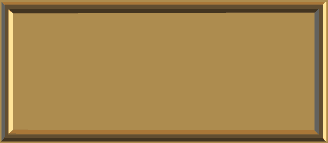

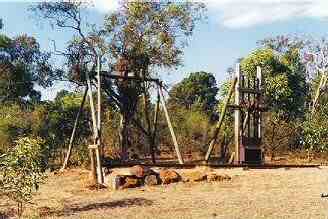
A Windlass and Damper at the Barossa diggings
More than 20,000 South Australian men left South Australia to seek their fortunes in Victoria and New South Wales. Women and children were left behind to fend for themselves.
To the Goldfields
If their men came home they usually brought gold and it was not easy to buy bread without coinage. The Government passed a Bullion Act which allowed the Government Assayer to stamp gold into small ingots that could be used as legal tender and to produce crude gold coins. The South Australian Government paid a much higher price for gold than in Victoria. Consequently, South Australian miners in other states sent their gold home to their wives.
The Commissioner of Police arranged for gold to be sent interstate to Adelaide by guarded escort.
Victoria taxed Chinese at £10 a head. This created an illegal trade whereby the Chinese were dropped off at ports in South Australia. Chinese diggers left Australia and went back to China with their gold. It was a drain on the economy. Riots ensued at gold mines between Chinese and European diggers. So all states legislated against Chinese in 1880. Their number quickly declined and those who remained grew vegetables for the European community.
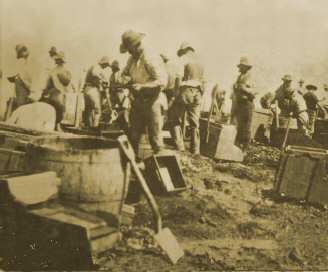
Tents at Teetulpa
Teetulpa miners
Chinese riots
Gold coach
Police escort
Although there were discoveries of gold in South Australia at Montacute, Barossa and Mount Pleasant they were only in moderate amounts.
Living in tents
in the Barossa
in the Barossa
It was backbreaking work. Soil was pulled up in rawhide buckets on a windlass.When the gold ran out at the earliest finds people hoped for new strikes but they were a long time coming. Gold was eventually detected in 1868 at Spike Gully again in the Barossa Valley by Job Harris.
The bird in Hand mine is situated in the Adelaide Hills at Woodside 30 km south of Adelaide. A fault runs through this area. Once the easy finds had ended miners left. David Rosewarne was appointed South Australia's first Inspector of mines in 1889. He promptly began getting work at the mine going again with the help of investment from oversees. The mine still operates today.
The next major strike was made by Thomas Brady and Thomas Smith at Teetulpa in 1886.
Bird in Hand mine
There were no facitlities for miners or their families are Teetulpa. They had to contend with the elements whether it rained or, more likely, it became hot and dry.
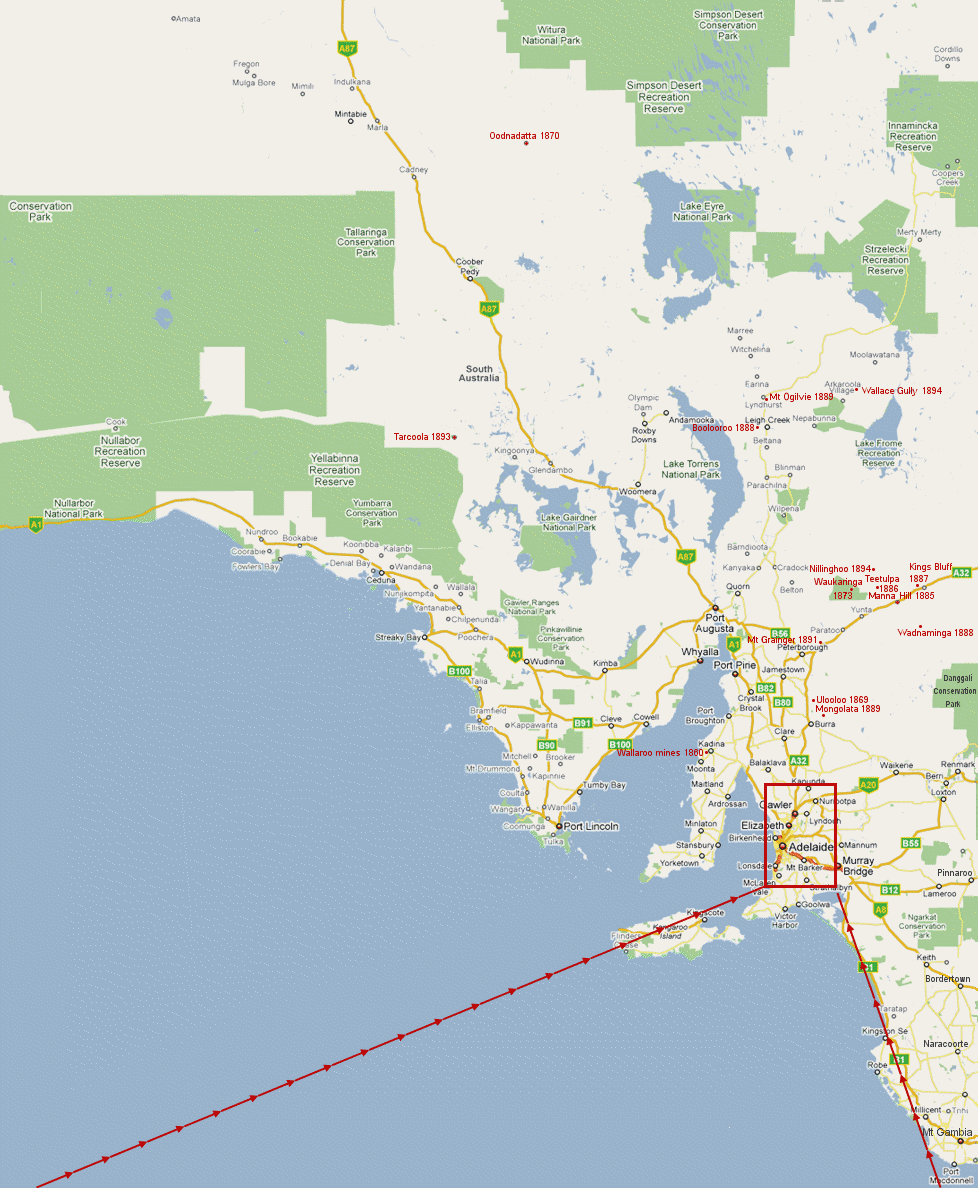










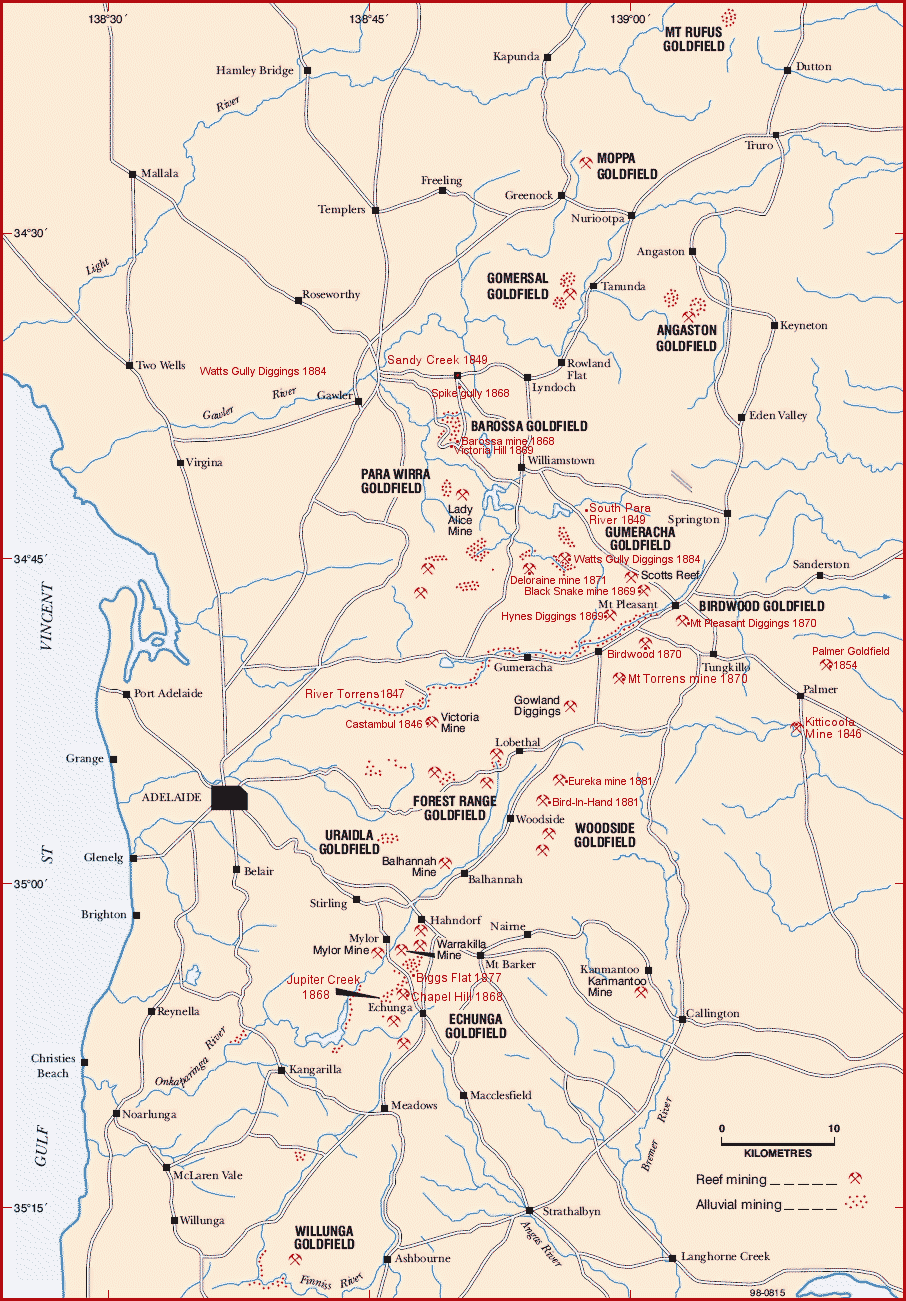

In 1851 the state Government offered a reward of £1,000 for a payable gold discovery. William Chapman put up his hand for this money when he found gold in 1852.

Gold Rush Tasmania is next page....

Histats.com



